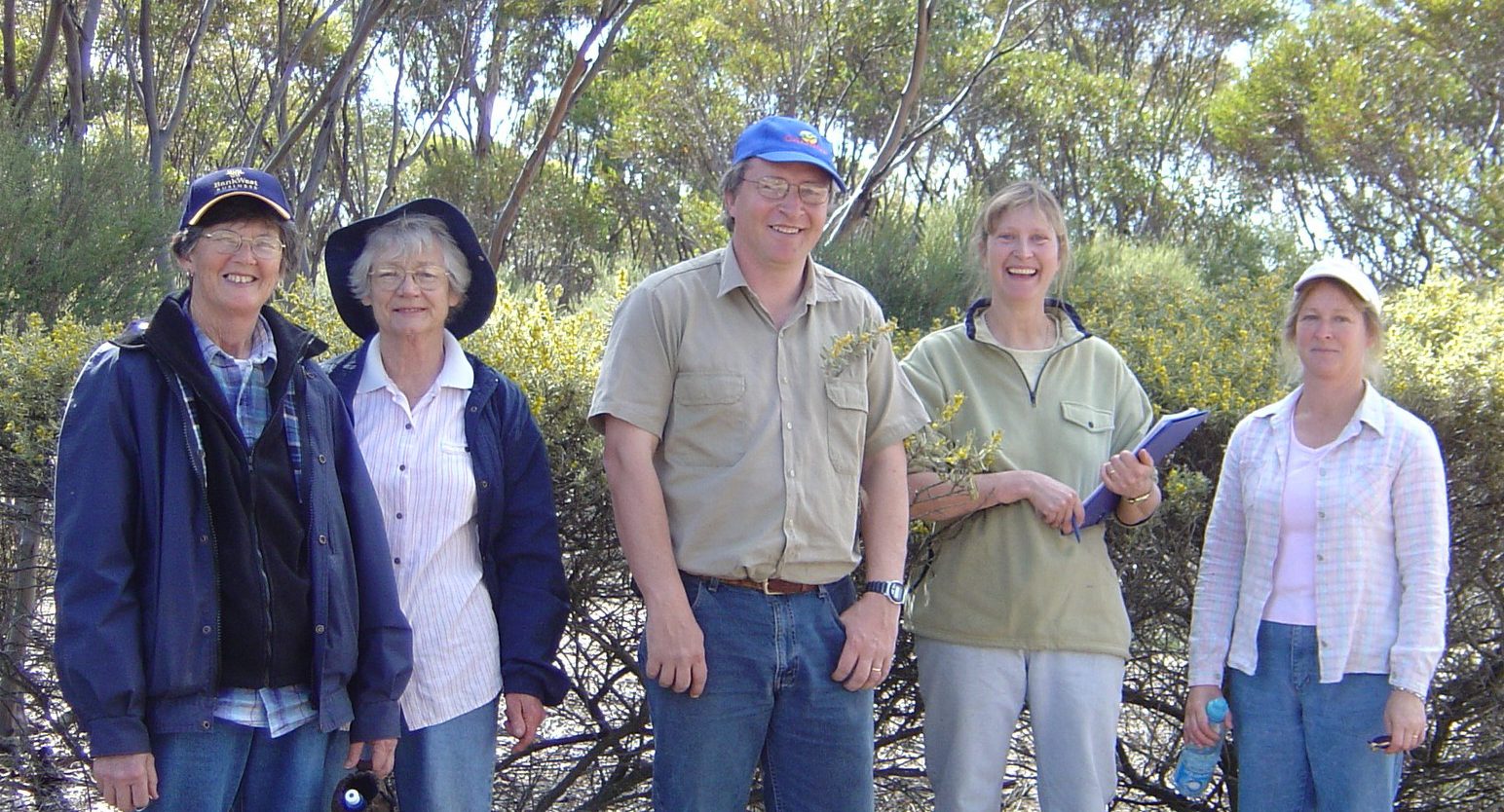Not long after Graeme and Judy Garlick purchased this property at Pingrup, a friend, Anne Rick, who is a local botanist approached Judy and told her that there was a rare species of Acacia (Acacia lanuginophylla) on their newly acquired land. Anne asked Judy to join her and visit the area where they were growing to conduct a survey and count. They were supported by Department of Biodiversity, Conservation and Attractions (DBCA) to conduct the survey. Once they got to 1,000, they stopped counting, realising that this was indeed a very special area that needed to be protected.
Acacia lanuginophylla was declared as Rare Flora in 1991 under the Western Australian Wildlife Conservation Act 1950 and is currently ranked as Vulnerable (VU) under World Conservation Union (IUCN 2001) Red List criterion D2 due to its restricted distribution and number of locations. Acacia lanuginophylla is listed as Endangered under the Environment Protection Biodiversity Conservation Act 1999 (EPBC Act). The main threats are senescence and the lack of a suitable disturbance regime, road, rail, powerline and firebreak maintenance, salinity, clearing of grade banks for water catchment, rubbish dumping, and stock degradation and grazing.
Graeme and Judy were trying to keep stock out of the area, but sheep were still going in about 3 to 4 metres. So, after learning more about the Acacia and a detailed survey being undertaken, it was believed that their property contained a significant percentage of the known world population of this particular acacia species (as this species only occurs in the Newdegate area). This is momentous, so they knew they had to protect it from stock and feral animals.
In 2016 Judy, together with Anne, approached Wheatbelt NRM to see how they could help protect the Acacia. Wheatbelt NRM were able to assist with funding as part of the ‘2015 Bushcare Grants Onground Works funding.’ The assistance consisted of providing 8.3km of stock proof fencing and pest management activities including 15 rabbit bait stations and the loan of two fox control cage traps to protect remnant vegetation and restore habitat.
Judy and Graeme are committed to protecting the area for future generations. Judy and Graeme contributed funds to purchase 10kg pail of 1080 bait for the feral animal control and rebaited as per their agreement with Wheatbelt NRM for a period of 3 years. They keep a close eye on the fencing and were careful to leave a fenced pathway through the area for the kangaroos and other wildlife to use to navigate the area.
Judy said that “the Wheatbelt NRM staff were supportive, enthusiastic, cooperative and flexible. They fitted in with what we could do and when we could do it. They helped with the application and made everything very easy for us.”
Judy said that “we would not have been able to fence the area without the help of the Wheatbelt NRM. The fencing has protected the plants and understory as well as a waterway. There has been complete protection from kangaroos and feral animals and the acacia are looking stronger and flowering beautifully. Most of all, we have successfully managed to protect approximately 30% of the world population of this species of Acacia.”
Judy said that working with the Wheatbelt NRM was a great experience and nothing was difficult. Because of this, she highly recommends anyone wanting to make positive NRM improvements to their property to have a chat with Wheatbelt NRM.
www.environment.gov.au/biodiversity/threatened/recovery-plans/national-r...


